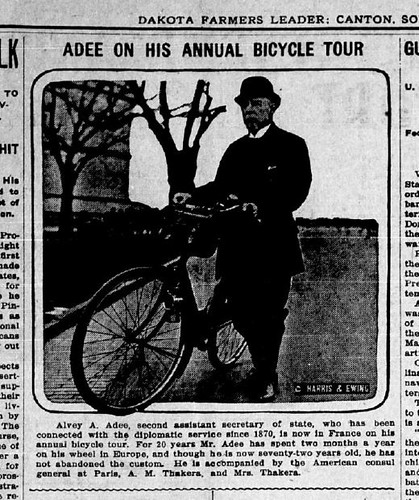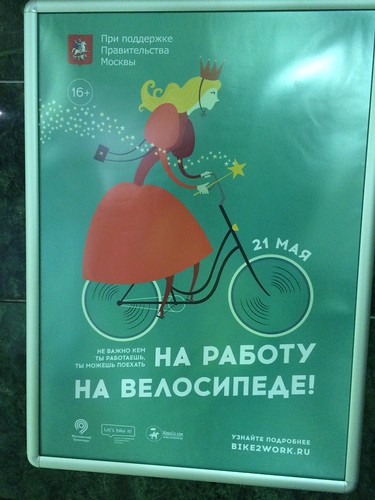Someone at work sent around a message about the new Library of Congress
online access to pre-digital versions of the Federal Register and used "bicycle" as the example search. When I ran the search, I discovered that bicycles had been rationed during World War II. It had never occurred to me that bicycles would have been rationed, although I knew there was rationing of sugar and gasoline (although apparently gasoline was only rationed on the east coast, it seems) and certainly tires, but bicycles? Yes.
The
National Museum of American History has a good description of one example of a Victory bicycle and the program but oddly with no photographs. Here is one paragraph:
In December 1941, the Office of Production Management and leading manufacturers developed specifications for a simplified bicycle dubbed the "Victory bicycle" by government and media. OPM reviewed several prototypes submitted for examination. Regulations finalized in March 1942 specified that bicycles would be lightweight - not more than 31 pounds, about two-thirds the weight of prewar bicycles - and they would be made of steel only, with no copper or nickel parts. Chrome plating was limited to a few small pieces of hardware. Handlebars and wheel rims would be painted instead of chrome plated, and most accessories (chain guard, basket, luggage rack, bell, whitewall tires) were eliminated. Tire size was limited to a width of 1.375 inches, narrower than balloon tires on prewar children's bikes. Production was set at 750,000 Victory bicycles per year by twelve manufacturers, approximately 40 percent of total prewar production but a significant increase in annual production of adult bicycles. The manufacture of all other types of civilian bicycles was halted.
However some bicycles were produced from existing parts that were also considered to be "Victory" bicycles, as shown in the photograph below that varies considerably from the description above.
 A photograph of a newly produced Victory bicycle in Washington, DC
A photograph of a newly produced Victory bicycle in Washington, DC
Title: The first lot of the new "Victory" bicycles to reach Washington receiving the seal of approval from Leon Henderson, administrator of the Office of Price Administration. Miss Betty Barrett, an OPM stenographer, is in the parcel basket. Stratetic [i.e. Strategic] war materials were eliminated in the manufacture of the bicycle.
Date Created/Published: 1942 March.
Medium: 1 photographic print.
Reproduction Number: LC-USZ62-102599 (b&w film copy neg.)
Notes: Office of War Information Collection. No. D-10906.
Subjects:
Henderson, Leon,--1895-1986.
World War, 1939-1945--Economic & industrial aspects--Washington (D.C.)
Bicycles & tricycles--1940-1950.
Library of Congress
http://www.loc.gov/pictures/item/91719260/
Leon Henderson who ran the Office of Price Administration for several years appears to have been kind of an idiot, since putting a woman in the bike's basket is pretty dumb, all the while smoking a cigar. (He was fired after the 1942 elections.) Since this bike would have been made from existing parts, the title entry above is in error (although it was transcribed, so the error isn't that of the Library of Congress) - strategic materials would only be eliminated in the production of
new bicycles made with newly manufactured parts, not a bike like this.
HathiTrust Digital Library helpfully provides a
booklet published by the federal government during the War that explains rationing, which notes, "In a democracy, government controls are relatively novel." In the section, "How Things are Rationed" it talks about bicycles:
When the supply is not large enough to distribute some to all, the commodity goes only to those who need it in connection with service to the war effort or the public welfare. Commodities being rationed in this way are tires, tubes, automobiles, bicycles, and typewriters.
On page 11, there is more about rationing of bicycles:
With curtailment of automobile manufacture, a new demand for bicycles arose in the United States. Whereas previously bicycles were used largely for sport, now there is a demand for them for essential transportation. In order to make sure that war workers, communications and messenger services and other essential users would be able to secure bicycles, the Government decided to ration the available supply. Bicycles may be purchased only by persons who need them to travel to work or who need them in their work, providing that such work contributes to the war effort.
It is slightly disingenuous to say that "bicycles were used largely for sport" - apparently 85 percent of bicycles sold before the War were children's bicycles. Production of all children's bicycles ceased as part of bicycle rationing, so that while far fewer bicycles were produced overall, there were more adult bicycles made and sold.













